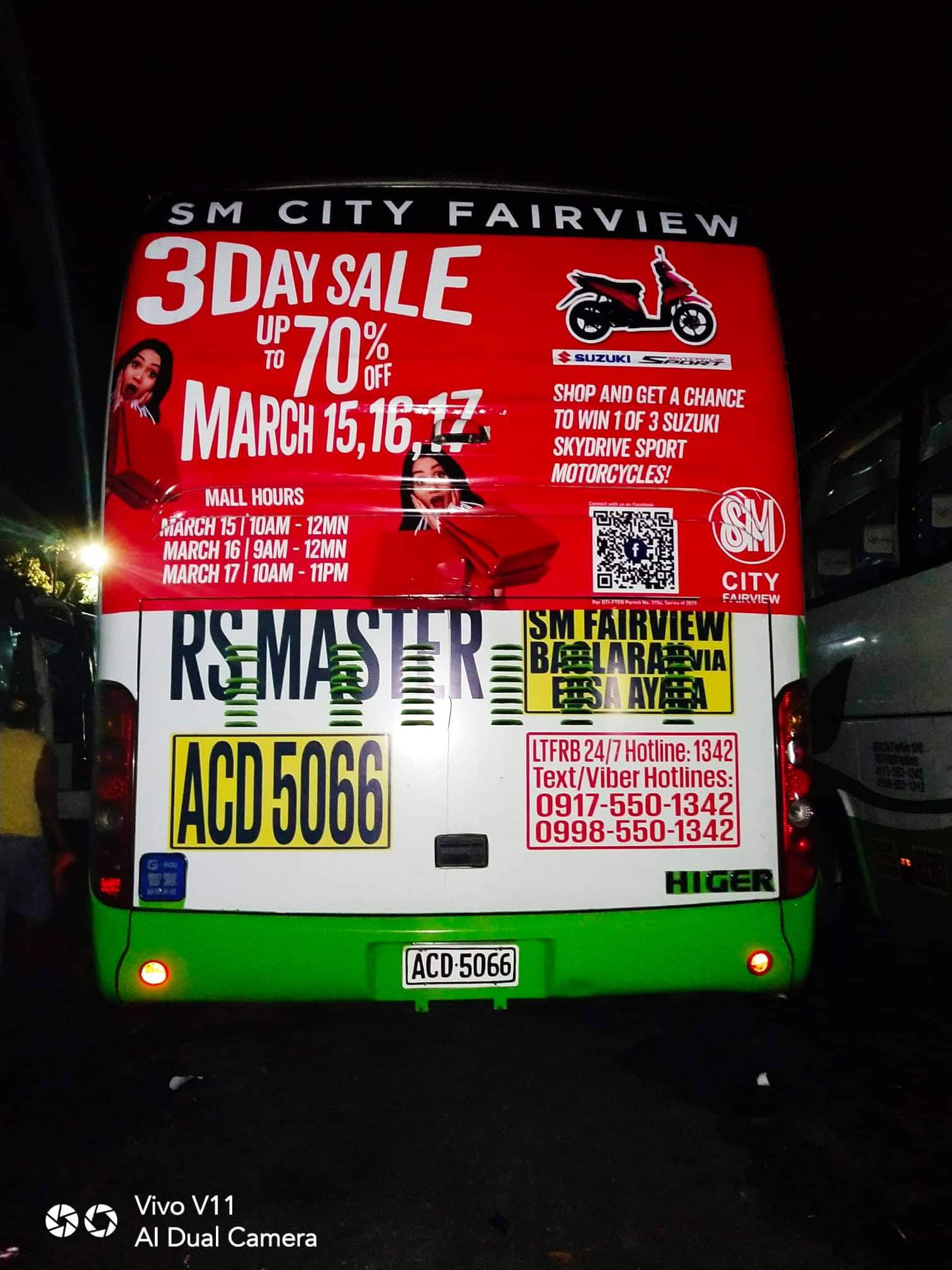Maximize Direct Exposure with Transit Advertising Philippines
Comprehending the Duty of Transit Marketing in Enhancing Brand Exposure and Customer Engagement
Transportation advertising and marketing has arised as a critical component in the marketing landscape, providing one-of-a-kind opportunities for brands to elevate their visibility and engage customers successfully. With the capability to get to a varied and restricted audience throughout their day-to-day commutes, these advertising strategies are not just regarding visibility; they are concerning creating significant links with prospective clients. As we check out the complex advantages and innovative approaches within transit advertising and marketing, it becomes necessary to think about exactly how these aspects jointly affect customer perception and behavior, raising questions about their long-term influence on brand name commitment.
Meaning of Transit Advertising
Transportation advertising describes the method of advertising items, solutions, or brands with ads put in and around public transport systems. This kind of marketing includes a range of placements, including posters on trains and buses, electronic screens at transportation terminals, and wraps on the exterior of cars. It aims to get to a varied audience, maximizing the high foot website traffic related to public transit.
Transit advertising and marketing is tactically positioned to capture the focus of commuters, who frequently invest significant time waiting or traveling. By integrating advertisements right into the everyday routines of individuals, brands can develop an enduring impression and foster brand name recognition. The tool is particularly effective in city atmospheres, where public transport is a main setting of travel.
In addition, transit advertising and marketing can assist in localized targeting, enabling businesses to get to specific demographics based on transportation routes and station places. As city populations expand and using public transport rises, this marketing approach has acquired prestige as an important element of incorporated marketing approaches. The dynamic nature of transit advertising and marketing, combined with its capability to involve consumers in a captive atmosphere, emphasizes its significance in contemporary marketing techniques.
Benefits of Transit Marketing
The performance of transportation advertising depends on its capability to deliver a plethora of benefits to brands seeking to enhance visibility and interaction. Among the main benefits is the substantial reach it provides; transit ads can properly target diverse demographics across urban areas, reaching both commuters and pedestrians alike. This broad direct exposure considerably increases brand understanding.
One more benefit is the high frequency of impressions. As transportation automobiles follow well established paths and stop at multiple locations, they develop recurring exposure that reinforces brand messages. This frequency promotes experience, which is essential in consumer decision-making.
Transportation advertising is also affordable compared to various other media systems. Provided its expansive reach and possibility for high perceptions, brand names typically experience a reduced cost per thousand impacts (CPM), optimizing their advertising and marketing spending plan.
Furthermore, transit advertisements can produce a feeling of neighborhood connection. By aligning with neighborhood transit systems, brand names can reverberate with regional target markets and promote a sense of neighborhood satisfaction. This localized approach boosts brand commitment and interaction, making transit advertising and marketing an engaging choice for organizations aiming to strengthen their existence out there.

Effective Strategies for Transportation Campaigns
To take full advantage of the influence of transportation campaigns, brands must take advantage of calculated preparation and execution customized to their target audience. Initially, recognizing the demographic attributes of the audience making use of public transit is critical. This enables brands to create tailored messaging that resonates with possible customers.
Following, picking the best transportation tools is vital. Whether using bus covers, subway posters, or digital displays, each tool has distinct benefits that can boost presence. As an example, vibrant visuals on bus wraps can draw in focus, while digital ads can be updated regularly to mirror timely promotions.
Additionally, incorporating a cohesive branding technique throughout transportation systems guarantees consistency and enhances the brand name's identity. Making use of memorable taglines and appealing styles will certainly strengthen brand name recall among travelers.
Lastly, timing is a vital consider implementing effective transportation projects. Introducing campaigns throughout peak traveling hours or local events can dramatically increase visibility and engagement. By employing these techniques, brands can efficiently harness the capacity of transit marketing, cultivating better recognition and link with their target market. Eventually, a well-executed transit campaign can drive significant development in brand name exposure and consumer involvement.

Gauging Impact and Involvement
In examining the effectiveness of transit ad campaign, precise measurement of impact and engagement is necessary for brands looking for to optimize their advertising and marketing techniques. Metrics such as reach, frequency, and impacts supply foundational data to analyze visibility. Evaluating these variables aids identify the amount of potential customers are exposed to the promotions during their daily commutes.
Interaction can be further assessed with customer interactions, such as site traffic, social media states, and direct reactions to calls-to-action featured in the advertisements. Utilizing devices like QR codes or distinct URLs can facilitate monitoring of customer habits straight linked to transportation projects. Studies and comments mechanisms also serve as important techniques to gather qualitative data on customer perceptions and recall of the promotion.
In addition, progressed analytics and attribution models can associate transportation direct exposure with succeeding buying behavior, supplying understandings right into the roi. By using a detailed strategy that incorporates qualitative and quantitative steps, brands can establish a nuanced understanding of their transit advertising impact. Inevitably, this data-driven technique allows brands to improve their projects, Read More Here ensuring they reverberate successfully with target audiences and improve total brand name exposure.
Study of Successful Campaigns
Successful transit ad campaign work as compelling examples of how reliable strategies can boost brand check my source name presence and interaction. Transit Advertising Philippines. One significant situation is the "I Love New York" campaign, which changed the city's photo and drew in countless travelers. By utilizing metro advertisements, billboards, and bus wraps, the campaign created a solid, cohesive brand identity, causing a significant uptick in tourist and regional company patronage
Another exemplary campaign is Coca-Cola's "Share a Coke" effort, which leveraged transportation marketing to personalize the brand experience. By including preferred names on advertising products across various transportation platforms, Coca-Cola fostered a much deeper emotional link with consumers, encouraging them to share their experiences on social media sites.
Furthermore, the "Got Milk?" campaign effectively made use of mass transit advertisements to reach a wide audience, enhancing the message of the value of milk in a balanced diet plan. The campaign saw a quantifiable increase in milk usage in target demographics.
These study illustrate that when implemented thoughtfully, transportation marketing can considerably boost brand presence, foster customer engagement, and drive measurable outcomes, demonstrating its crucial their website function in contemporary advertising and marketing approaches. - Transit Advertising Philippines
Final Thought
Finally, transit advertising and marketing serves as a crucial tool for improving brand name exposure and promoting consumer interaction. By using strategically placed ads within public transport systems, brands can properly reach varied target markets and enhance acknowledgment via consistent exposure. The application of targeted messaging and cutting-edge strategies further enhances the effect of transportation projects. Eventually, the capacity to gauge engagement and evaluate successful instance research studies emphasizes the performance of transit advertising and marketing in driving brand name commitment and customer communications.
Transit marketing has emerged as a critical element in the advertising and marketing landscape, supplying one-of-a-kind chances for brands to elevate their visibility and involve customers successfully.Additionally, transportation advertising and marketing can assist in localized targeting, allowing organizations to get to particular demographics based on transit courses and station locations.In reviewing the efficiency of transit marketing campaigns, exact measurement of influence and interaction is necessary for brands looking for to optimize their advertising and marketing strategies.Effective transit advertising and marketing campaigns offer as compelling instances of exactly how effective methods can elevate brand name exposure and involvement.In final thought, transportation marketing offers as an important device for enhancing brand name visibility and cultivating consumer interaction.